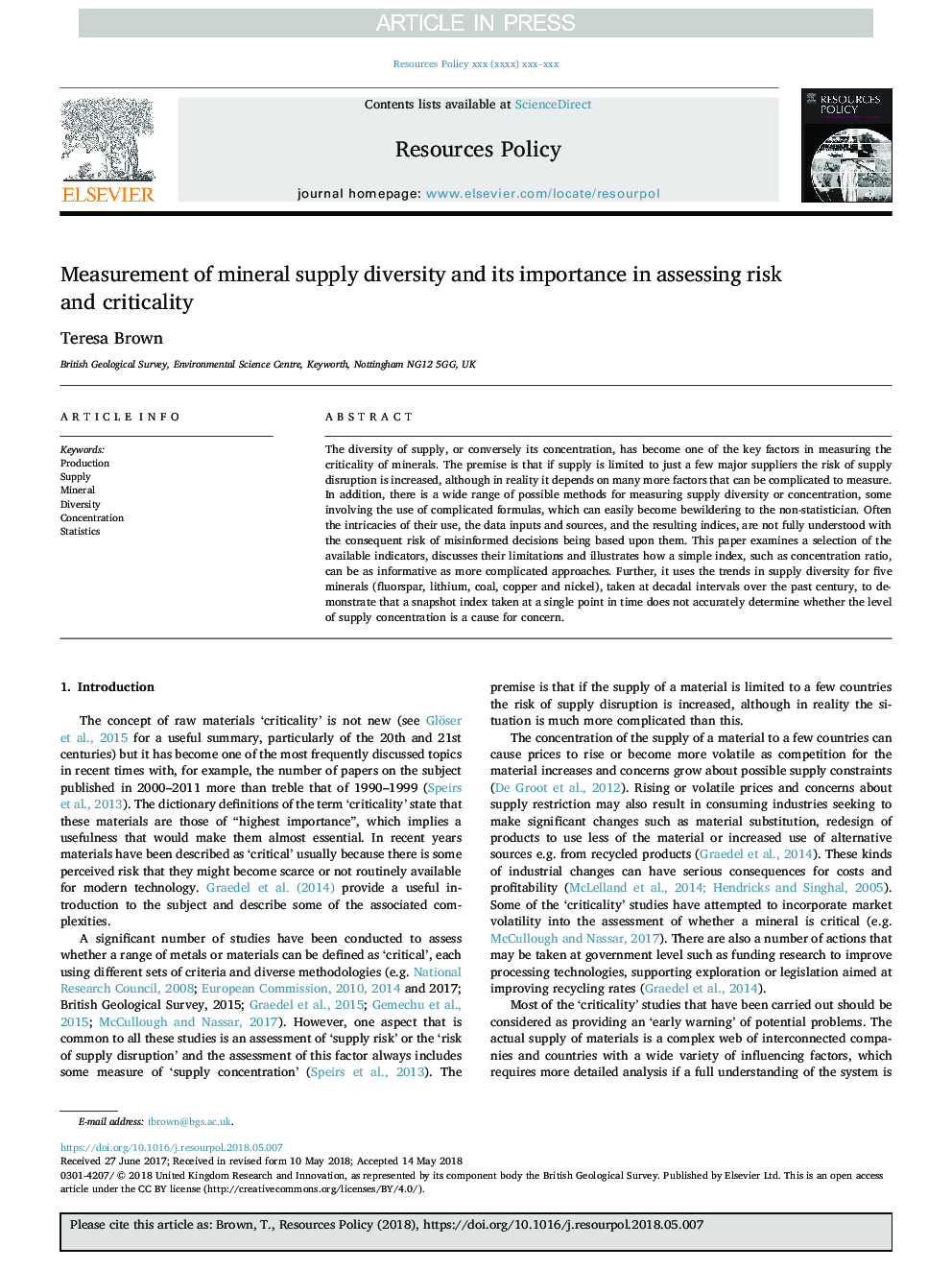| Article ID | Journal | Published Year | Pages | File Type |
|---|---|---|---|---|
| 10153795 | Resources Policy | 2018 | 17 Pages |
Abstract
The diversity of supply, or conversely its concentration, has become one of the key factors in measuring the criticality of minerals. The premise is that if supply is limited to just a few major suppliers the risk of supply disruption is increased, although in reality it depends on many more factors that can be complicated to measure. In addition, there is a wide range of possible methods for measuring supply diversity or concentration, some involving the use of complicated formulas, which can easily become bewildering to the non-statistician. Often the intricacies of their use, the data inputs and sources, and the resulting indices, are not fully understood with the consequent risk of misinformed decisions being based upon them. This paper examines a selection of the available indicators, discusses their limitations and illustrates how a simple index, such as concentration ratio, can be as informative as more complicated approaches. Further, it uses the trends in supply diversity for five minerals (fluorspar, lithium, coal, copper and nickel), taken at decadal intervals over the past century, to demonstrate that a snapshot index taken at a single point in time does not accurately determine whether the level of supply concentration is a cause for concern.
Related Topics
Physical Sciences and Engineering
Earth and Planetary Sciences
Economic Geology
Authors
Teresa Brown,
